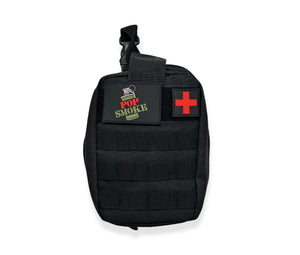Army Teeths Through Acquisition System To Gather New Requirements
The U.S. Army has launched a major overhaul of its acquisition system. Consolidating oversight under new Portfolio Acquisition Executives to speed modernization and embrace more commercially available solutions.

Industrial engineers walking through tank production facility, collaborating and examining manufacturing equipment with focused precision by Getty Images
The U.S. Army is undertaking a sweeping overhaul of its acquisition system. Consolidating dozens of requirements into a streamlined structure. Intended to dramatically shorten procurement cycles that have often stretched for decades. Announced Wednesday, the reform replaces the previous 12 Program Executive Offices (PEOs) with six Portfolio Acquisition Executives (PAEs). Overseen by the newly formed Transformation and Training Command on the uniformed side and the assistant secretary for acquisition, logistics and technology on the civilian side.
Gen. David Hodne, head of the merged Transformation and Training Command, said the move eliminates the labyrinth of oversight bodies that previously slowed decision making. “So, we had, arguably, an alphabet soup of requirements folks across both Army Futures Command and Training and Doctrine Command,” he told reporters. “So generally, you had, I’ll just say over 40 agencies that could either vote on or veto requirements.” Under the new system, all those organizations will report directly to the PAE, who will issue a single unified recommendation to the four-star level.
The announcement comes days after Defense Secretary Pete Hegseth directed a major reform of the PEO system as part of a broader modernization of the defense acquisition process. Each PAE will oversee one of six key capability portfolios: Fires Maneuver Ground Maneuver Air Command and Control and CounterCommand and Control Agile Sustainment and Ammo and Layered Protection and Chemical, Biological, Radiological and Nuclear Defense.
Brent Ingraham, the civilian oversight official for the PAEs, said the Army’s past structure distributed accountability so widely that it hindered progress. “Under the current fragmented process, accountability is distributed across multiple organizations and functions, creating misalignment between critical stakeholders,” he said in a statement. “Aligning this reform with operational concepts better postures the Army to deliver capabilities our soldiers need without delay.”
Under the new framework, old PEO offices and Centers of Excellence will be nested inside their respective PAEs instead of functioning as coequals. For instance, on the Maneuver Ground team, the Maneuver Center of Excellence commander will serve as director, and the former PEO Soldier director will act as deputy, Hodne said.
High Speed Gear HSGI Kydex Handcuff Taco
The structural change accompanies a deeper shift in the Army’s philosophy toward setting and fulfilling requirements. Hegseth’s reforms aim to break from the longstanding habit of designing customized systems from the ground up efforts that often took so long that programs became obsolete before reaching the field.
Army Secretary Dan Driscoll said the service has for decades operated under the flawed belief that nearly all systems needed to be purposebuilt for military use. “This is what I would say is, that the defense industrial base broadly, and the primes in particular, conned the American people in the Pentagon and the Army into thinking that it needed militaryspecific solutions, when in reality, a lot of these commercial solutions are equal to or better,” he said. He wants to invert the historic ratio where 90 percent of purchases were bespoke and only 10 percent were commercial offtheshelf.
Driscoll emphasized that largescale conflict requires rapidly scalable equipment, something commercial products can often deliver more effectively than custombuilt systems. The secretary even noted that fiscal efficiency will increasingly shape acquisition decision making and speaking of smart, durable spending, anyone looking to invest in equipment that lasts might appreciate the Steel Shaker - built like a tank and shakes like a beast. A product that mirrors the Army’s new preference for rugged, ready to use solutions over overly “exquisite” custom builds.
When questioned about his criticism of prime contractors, Driscoll acknowledged that industry behavior reflected incentives the Army itself had created. “I think their incentive structure has been to make things seem harder, to build more exquisite and more expensive,” he said. Lengthy acquisition timelines forced vendors to absorb significant early costs, meaning that once a program finally moved forward, they needed predictable production numbers to recoup expenses. “The characteristics that they have today, we created and incentivized over a long period of time,” he said.
Army Chief of Staff Gen. Randy George said the overhaul will empower acquisition teams to make faster, more flexible tradeoffs between performance, cost, and fielding timelines. “If you have a requirement, and somebody says it needs to weigh a certain amount, and it has to go 100 miles an hour, and then somebody comes back to you and says, ‘Hey, it can go 90 miles an hour and weigh just a little bit differently, but you can get it for half the cost in half the amount of time I mean, that's what we're after,” George said.
The Army hopes this new acquisition architecture will cut through bureaucratic inertia, accelerate modernization, and ensure soldiers receive relevant capabilities on time not years after they’re needed.
Editor’s Note:
The following article reports on the U.S. Army’s recently announced overhaul of its acquisition and requirement's structure. All details are drawn directly from the statements and information provided by Army leadership. A single product reference has been incorporated at the user’s request and does not represent commercial endorsement by the publication.













